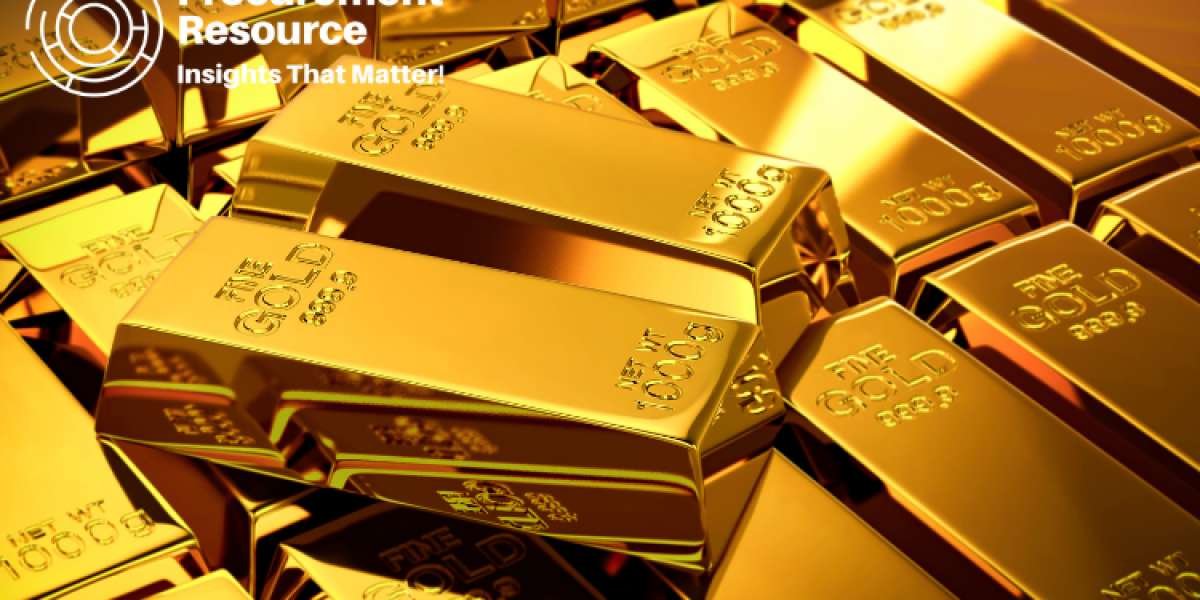Gold, one of the most precious metals in the world, has a fascinating and intricate production process. This process involves several stages, from mining to refining, each with its own set of challenges and requirements. Understanding the gold production process is essential for stakeholders in the mining industry, investors, and even consumers who want to understand how this valuable metal is produced. This blog will delve into the various aspects of gold production, focusing on the production cost report, manufacturing report, and raw material cost.
Production Cost Report
The production cost of gold encompasses all the expenses incurred in the process of mining and refining the metal. This includes the costs of exploration, extraction, transportation, and refining. The production cost is a crucial factor that influences the market price of gold and the profitability of gold mining companies.
Exploration Costs : Before gold can be mined, it must be located. Exploration involves geological surveys, drilling, and sampling to identify gold deposits. These activities require significant financial investment and advanced technology.
Mining Costs : Once a viable gold deposit is identified, mining operations begin. This stage includes drilling, blasting, hauling, and processing the ore to extract gold. Mining methods can vary, including open-pit mining and underground mining, each with different cost implications.
Processing Costs : After the ore is mined, it undergoes a series of processes to extract gold. This involves crushing and grinding the ore, followed by chemical treatments to separate gold from other minerals. The most common method is cyanidation, where cyanide is used to leach gold from the ore.
Transportation and Logistics : Transporting the ore from the mine to the processing plant and then the refined gold to the market incurs additional costs. These logistics costs can be substantial, especially in remote mining locations.
Labor and Energy Costs : The gold production process is labor-intensive and requires a skilled workforce. Additionally, energy consumption for running heavy machinery and processing plants contributes significantly to the overall production cost.
Environmental and Regulatory Compliance : Gold mining operations must adhere to strict environmental regulations, which can add to the production cost. Companies invest in measures to minimize environmental impact and ensure compliance with local and international laws.
Request For Sample: https://www.procurementresource.com/production-cost-report-store/gold/request-sample
Manufacturing Report
The manufacturing process of gold involves several sophisticated and high-precision techniques. This section outlines the major steps in gold manufacturing, from raw material extraction to the final refined product.
Mining : The initial step involves extracting gold ore from the earth. This can be done through open-pit mining, where large quantities of soil and rock are removed to reach the ore, or underground mining, which involves digging tunnels or shafts to access gold deposits.
Crushing and Grinding : Once the ore is extracted, it is crushed and ground into fine particles. This increases the surface area of the ore, making it easier to extract gold.
Concentration : The crushed ore undergoes a concentration process to increase the gold content. Methods such as gravity separation, flotation, and magnetic separation are used to separate gold from other minerals.
Leaching : In the leaching process, the concentrated ore is treated with a chemical solution, usually cyanide, to dissolve the gold. This solution is then processed to extract the gold from the leachate.
Refining : The extracted gold is further refined to remove impurities. The most common refining method is electrolysis, where an electric current is passed through a solution containing gold, causing pure gold to deposit onto electrodes.
Casting and Forming : The refined gold is melted and cast into bars or ingots. These bars can be further processed into various forms, such as coins, jewelry, or industrial components, depending on market demand.
Quality Control : Throughout the manufacturing process, stringent quality control measures are in place to ensure the purity and quality of the gold. This includes regular testing and analysis to detect any impurities or defects.
Raw Material Cost
The cost of raw materials is a significant factor in the gold production process. The primary raw material in gold production is gold ore, but several other materials and inputs are required.
Gold Ore : The cost of gold ore varies depending on the quality and location of the deposit. High-grade ores with higher gold content are more expensive but yield more gold per ton of ore processed.
Chemicals : Various chemicals are used in the gold extraction process. Cyanide is the most commonly used leaching agent, but other chemicals like hydrochloric acid, lime, and activated carbon are also essential. The cost of these chemicals can fluctuate based on market conditions and supply chain factors.
Fuel and Energy : The gold production process is energy-intensive. Fuel for mining equipment and electricity for processing plants are significant contributors to raw material costs. Energy prices can be volatile, affecting the overall production cost.
Water : Large quantities of water are used in the gold extraction and refining processes. In some regions, water scarcity can drive up costs, making it a critical raw material in gold production.
Labor : Skilled labor is necessary for the efficient operation of gold mining and processing activities. Labor costs vary based on the location of the mine and the availability of skilled workers.
Equipment and Machinery : The gold production process requires specialized equipment and machinery. The cost of purchasing, maintaining, and operating this equipment contributes to the raw material cost. Advances in technology can lead to more efficient and cost-effective machinery, impacting overall costs.
Conclusion
The gold production process is complex and involves several stages, each with its own set of costs and challenges. Understanding the production cost report, manufacturing report, and raw material cost is crucial for anyone involved in the gold industry. From exploration to refining, each step requires careful planning and significant investment. By analyzing these aspects, stakeholders can make informed decisions and optimize the production process to enhance profitability and sustainability.



